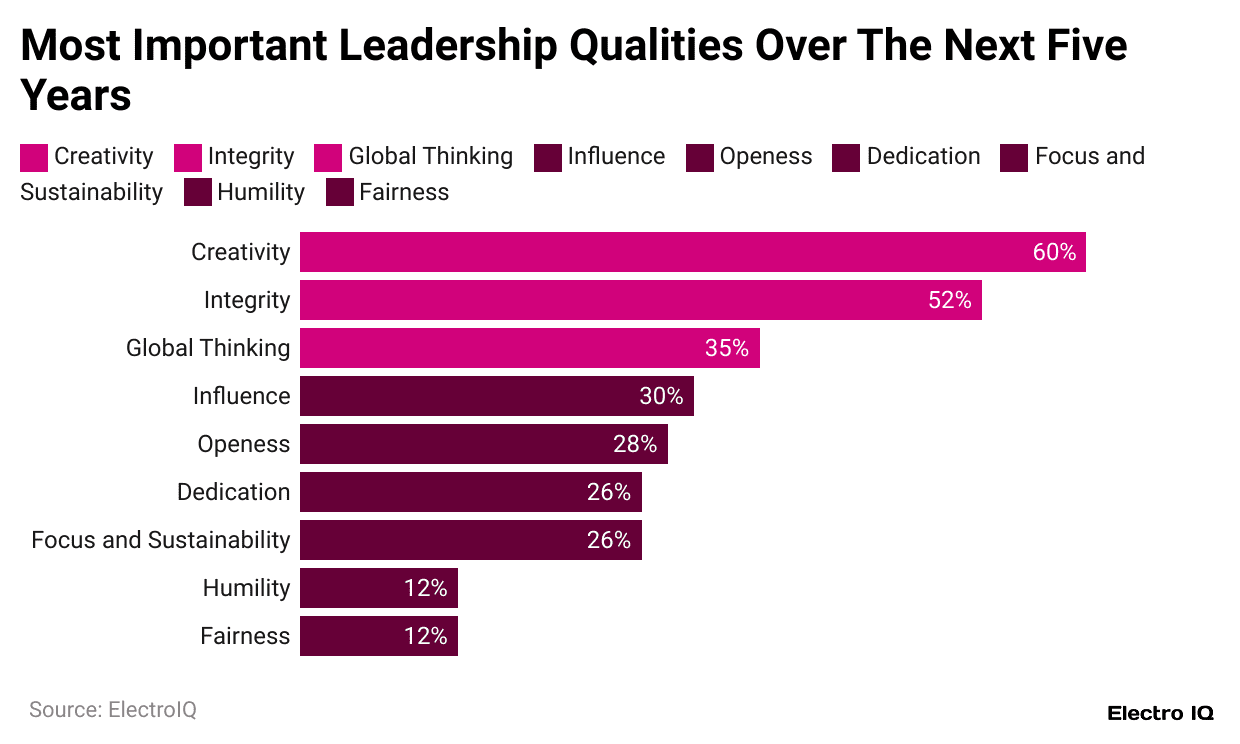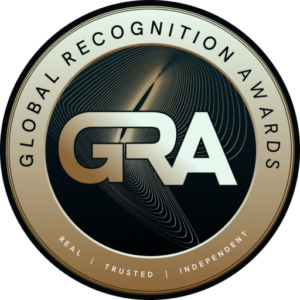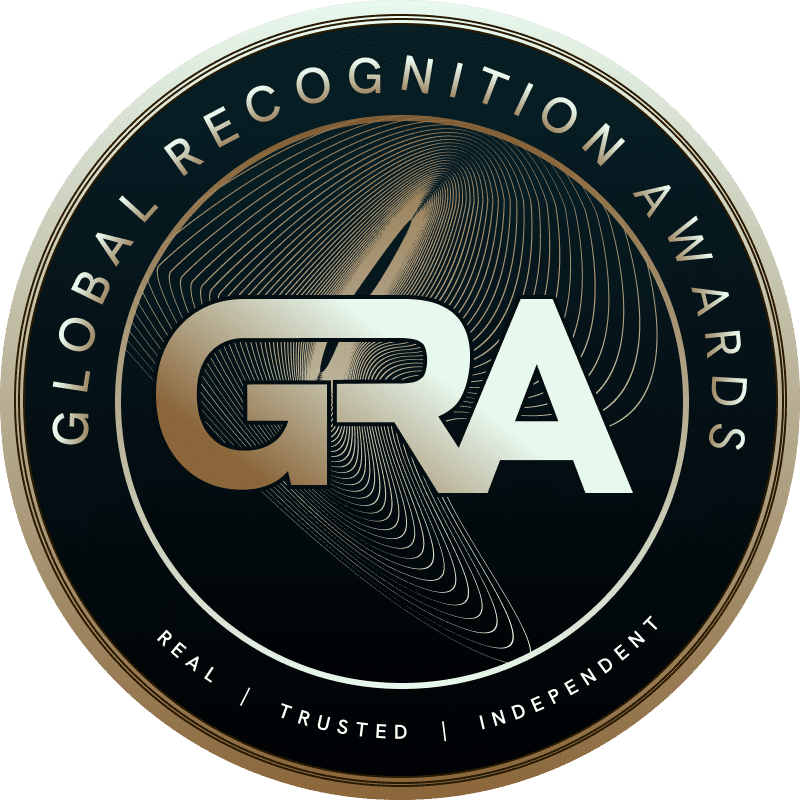Table of Contents
Leadership recognition signals that someone’s contributions are being seen and valued. It confirms that a leader’s ideas, results, and influence have made an impact within their team and across the organization.
Strong recognition helps build credibility, attract talent, and earn trust. For individual leaders, it underscores that their work carries real value.
This kind of recognition begins with a clear, thoughtful nomination process, one that highlights what a person accomplished and how they led others.
Judges look beyond metrics. They want to understand how a leader solved problems, inspired teams, and created lasting improvements.
Demonstrating leadership success through specific, meaningful examples is far more effective than listing titles or responsibilities.
According to a 2024 survey conducted by Global Recognition Awards, 93% of business leaders reported that public recognition significantly improved their team’s performance and morale.
The survey gathered responses from 1,250 senior professionals across sectors, including finance, tech, healthcare, and manufacturing, further emphasizing the widespread value of recognition in driving results.
Even the strongest leadership story needs structure and clarity. A solid nomination organizes the facts in a way that helps judges understand the full scope of the leader’s impact. Good submissions connect the dots between results, actions, and leadership style.
If you’re just beginning the process—or reassessing your current approach—it’s helpful to start by understanding business awards.
It explains how award programs work, what judges focus on, and how to choose the right category.
Ultimately, leadership recognition comes from telling a clear, honest story. When that story shows how someone made a real difference, it has the potential to stand out and leave a lasting impression.
Raise Your Profile With Leadership Recognition
Apply now to spotlight your achievements and get the recognition real leaders earn.
Why Leadership Recognition Requires More Than Achievements
Leadership recognition doesn’t happen through a list of titles or accomplishments. Award-winning submissions reflect thoughtful decisions, influence, and the results that followed.
It’s not only about showing that someone led, but also explaining how their leadership created meaningful results.
Listing Accomplishments Isn’t Enough
When award judges read through many entries, impressive stats like “increased revenue by 40%” or “launched a new division” start to blend together. Without any context or explanation, these achievements lose their impact.
The best submissions give more information about what really happened. They:
- Explain the background or need behind each achievement
- Describe what actions the leader took
- Highlight how others were involved
- Show the outcome in a clear, direct way
What Judges Want to See
Judges reviewing leadership award entries look for more than a summary of past work. They want to understand how a person made decisions, influenced teams, and drove progress. The leadership nomination process focuses on identifying real signs of influence and effectiveness.
Strong submissions often include:
- A clear vision and how it was communicated to others
- New ways of thinking or working that changed results
- A strong link between leadership and measurable outcomes
- Positive effects that extended to people, processes, or communities
Showing What Leadership Success Looks Like
Successful submissions explain how leadership created results. Instead of just saying “employee engagement increased,” a detailed entry will describe steps the leader took and what changed. For example:
- Introduced a mentorship program
- Improved communication between departments
- Raised engagement scores by 25%
- Reduced staff turnover
Including real-world actions and outcomes shows how leadership shaped results. That’s how you demonstrate leadership success in a clear and useful way.
This also connects with choosing the right awards. A strong submission will match the award’s focus. If the award values innovation, your story should show how new ideas were applied.
If it focuses on community impact, highlight programs that made a difference. Aligning your entry with the award’s purpose helps it stand out.
Build a Submission That Sticks
To make your submission more effective, focus on clear, direct information. Helpful content often includes:
- A simple summary of the situation
- A description of what the leader did
- The results, supported by numbers or testimonials
- Reflections on what worked and what was learned
You can also strengthen your entry by adding:
- Short quotes from colleagues or clients
- Stats that show improvements
- Stories that illustrate how decisions were made
Your goal is to help the judges understand what was done, why it mattered, and what changed because of it.
Leadership recognition is based on clear results and honest reflection. Submissions that focus on real experiences and outcomes often leave a stronger impression.

Key Elements of a Strong Leadership Award Submission
Submitting a leadership award entry means presenting a clear, credible, and engaging case for why your leadership deserves recognition.
Share the Full Story of Your Leadership
Think of your leadership nomination process as building a clear summary, not just a list of roles and dates. Judges want to see how your vision, decisions, and actions led to real progress.
Begin by describing a situation where leadership was needed, then explain what you did and what changed as a result.
Instead of saying you “led a digital transformation,” explain how you encouraged your team to adopt new tools and how that decision cut project turnaround time by 30%.
Leadership recognition depends on showing the reasons behind your actions as well as the results.
Pro Tip: Use the STAR method (Situation, Task, Action, Result) as a guide to structure impactful leadership examples.
Use Clear Examples of What You’ve Accomplished
Visionary leadership qualities are important, but the results you achieved carry the most weight. Highlight specific outcomes that reflect your impact.
Did your team grow or improve under your direction? Did your ideas help launch a new project or improve customer experience?
Avoid general claims. Saying you “improved communication” is too vague. Try something more specific, like “employee engagement scores went up 25% after starting weekly team meetings.”
Let the Numbers Show Your Impact
Leadership success becomes clearer when you include data. Use simple numbers to compare how things looked before and after your leadership actions.
You don’t need a long list of statistics. Focus on the most relevant ones—revenue gains, reduced turnover, or new partnerships.
Connect the data to your decisions. Judges often look for progress they can measure. Show how your leadership contributed to better results across the board.
Let Others Speak for You
Including testimonials strengthens your submission. Feedback from coworkers, team members, or clients adds credibility and helps support your story.
Choose quotes that are short and to the point. Instead of using something like “Taylor is a strong leader,” choose a quote such as “Under Taylor’s direction, we completed two projects ahead of schedule and reduced onboarding time by 50%.” That kind of statement supports your case with real examples.
Common Mistakes to Avoid in Leadership Award Applications
Strong leadership can be easy to recognize in action but tricky to describe in writing. Many award submissions fall flat because they miss the mark in clarity, detail, or focus.
If your submission sounds like a résumé or a collection of buzzwords, it’s time for a fresh look.
Here are some of the most common mistakes people make when applying for leadership recognition—and how to avoid them.
1. Submissions That Are Too Vague
Leadership recognition depends on being specific. Too often, applications list broad qualities without real examples.
Saying you “drive innovation” doesn’t mean much unless there’s a clear explanation behind it. Awards are about showing, not telling.
Try this instead: Instead of writing “transformed the company culture,” describe how you led town halls each quarter, started a peer-nomination program, and helped raise engagement scores by 35% in a year. That’s the kind of detail that helps your story stick.
2. Missing the Results
Judges look for outcomes. If there’s no clear result, they won’t know how effective your leadership was. Strong submissions show growth, improvements, or change.
That might mean higher revenue, stronger employee retention, faster project delivery, or happier customers. Demonstrating leadership success means using numbers or examples that show progress.
A line like “reduced customer churn by 20% in six months after launching a retention strategy” is clearer and more useful than saying “improved customer experience.”
Pro Tip: Use at least one data point per major achievement to ensure your submission is anchored in results.
3. Overused Buzzwords Without Substance
Describing yourself as a “visionary leader” doesn’t carry much weight unless there’s a story behind it.
Buzzwords are common, but they don’t build trust if they’re not backed up by action. Visionary leadership qualities show up through real decisions and visible impact.
Think about specific moves you’ve made. Did you identify a shift in the market and act early? Did your leadership lead to a product launch or business shift that paid off? Details like these carry much more weight than catchy phrases.
4. A Real-World Example: The Entrepreneur of the Year Award
The Entrepreneur of the Year award is one of the most respected business honors available. It recognizes leaders who show strong growth, fresh thinking, and measurable success. Winning submissions are filled with clear examples and solid data, not just general claims.
Judges want to see impact. The best applications lay out how the business changed under your leadership, what decisions made the difference, and how others were influenced by your work.
Claim Your Place Among Recognized Leaders
Showcase your impact, submit your entry now and let your leadership speak louder.
How to Structure Your Leadership Award Entry for Maximum Impact
When it comes to leadership recognition, how you present your story matters. The most effective submissions guide the reader clearly. A strong structure helps judges understand your goals, your work, and the results.
Start With a Clear Executive Summary
The executive summary should introduce your leadership vision and highlight key achievements.
Keep it short and focused. Mention your most impactful accomplishment, the leadership qualities behind it, and why your work deserves attention. This is a good place to bring in any visionary leadership qualities that shaped your decisions.
Use direct language. For example, “Led a multi-department project that reduced onboarding time by 40%” is clearer than “Oversaw improvements in onboarding.”
Organize With Problem, Solution, and Outcome
This format helps tell your story step by step:
- Problem: Describe what needed to be addressed. Keep the explanation brief and specific.
- Solution: Explain what actions you led. Highlight decisions that show leadership and initiative. This is where you begin demonstrating leadership success.
- Outcome: Share the results. Use numbers, quotes, or feedback if available.
Even results that aren’t easily measured can be framed clearly. For example: “After launching our mentorship program, employee retention among new hires improved year-over-year.”
This format is widely used in award submissions and shows that you’re focused on results. It also shows you’re serious about mastering the award application process.
Highlight Leadership Outside Your Job Title
Titles don’t speak for your full contribution. Focus on the actions and decisions that reflect leadership. If you introduced a new program, supported your team through a big shift, or led work that helped the wider community, include those examples.
You might have pushed for better hiring practices, started a company-wide initiative, or helped others grow in their roles. These actions give a stronger picture of what leadership recognition really means.
Judges are often looking for people who lead with intent, support others, and create lasting impact. These stories are often the most persuasive part of any entry.
Connect Everything to Show a Clear Picture
Each section should support the next. A strong summary, followed by a logical structure and detailed examples, makes it easier for the reader to follow your story and understand its impact.
This approach also shows how much thought you’ve put into your submission. Taking the time to structure your entry clearly is a key part of mastering the award application process.
Strong leadership recognition starts with a clear and confident presentation. Focus on your actions, results, and the values that guided your choices. Let your story speak for itself.

The Advantage of Working with Award Experts Like GRA
Leaders looking for global acknowledgment benefit from applying through the Global Recognition Awards (GRA). This award platform highlights achievements in a clear, structured way.
The process focuses on recognizing individuals who lead with impact and clarity. Programs like the International Business Awards set a high standard, and GRA aligns with that level of excellence while keeping the submission process simple and focused.
A Clear and Simple Leadership Nomination Process
Submitting a nomination for leadership recognition can be straightforward. GRA makes the process easy to follow, whether someone is applying for themselves or on behalf of someone else.
The system is user-friendly. Application forms are simple, and the judging criteria are available upfront. This helps applicants focus their efforts on relevant information and avoid guesswork.
The structure encourages clarity. Applicants can show how they made decisions, what outcomes followed, and how those efforts made a difference. This clear framework helps focus on results without unnecessary complexity.
Highlighting Vision and Strong Leadership Qualities
Strong leaders stand out because of their direction, consistency, and ability to inspire action. GRA looks for these qualities.
The program values resilience, solid decision-making, and clear leadership outcomes. It applies the same standards seen in respected awards like the International Business Awards.
Applicants are encouraged to give specific examples of their leadership efforts. This includes changes made in their teams, growth achieved in their organizations, or influence in their industries. GRA looks at the full picture of a leader’s efforts and the results they produced.

Source: Electro IQ
Showing Results with Confidence
Many leaders struggle to explain their accomplishments clearly. GRA helps make that easier. The application encourages people to include numbers, timelines, and outcomes.
Instead of general statements like “led a growth project,” an applicant might say they increased revenue by 30% in one year while improving employee retention. Details like this create a clearer view of leadership success.
These elements help applicants present a full story. Leaders can show how they worked through challenges, improved performance, and supported their teams.
Recognizing Leadership at a Global Level
Being selected through GRA carries real value. This platform reflects the same high standards found in the International Business Awards.
GRA programs review submissions carefully, using judging methods based on results and leadership quality.
Leaders from many industries, such as education, healthcare, and technology, have found recognition through GRA.
The awards support individuals who take responsibility, lead with consistency, and bring positive change to their teams and organizations.
Pro Tip: If applying through a third-party platform like GRA, take advantage of any feedback or guidance they offer during the process.
Put Your Leadership Story Forward with Confidence
A strong submission means telling a clear story. Focus on what happened, what you did, and why it mattered. Leadership recognition comes when your impact is easy to understand.
Use real examples, simple numbers, and short quotes to show how your leadership worked. Keep your story organized so judges can follow along and see the results.
If you’re not sure where to begin, GRA makes the process simple. Their structure helps you focus on decisions, actions, and outcomes that show how you led.
Ready to be recognized for your leadership achievements? Apply for the Leadership Awards program today.

Jethro Sparks
Founder of Global Recognition Awards
Related posts
Ready to take your business to the next level?
Apply today and be a winner




